Shevlin Sebastian's Blog, page 74
April 12, 2017
Hiding In Plain Sight
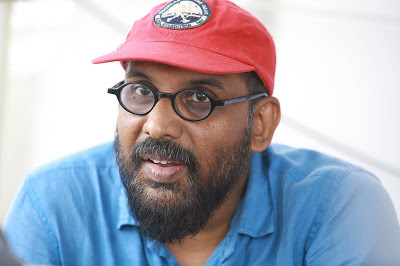
 COLUMN: LOCATION DIARY
COLUMN: LOCATION DIARY Director Leo Thaddeus talks about his experiences in the films, 'Oru Cinemakkaran', 'Payyans' and 'Pachamarathanalil'
Photos: Leo Thaddeus; Rajisha Vijayan (left), Vineeth Sreenivasan and Leo Thaddeus on the sets of 'Oru Cinemakkaran'
By Shevlin Sebastian
At 9 a.m., on a hot day in March, a man stood at the side of the main road outside the Jawaharlal Nehru stadium at Kochi. None of the daily commuters recognised him. That was because he had tied a handkerchief around his face and kept only his eyes free. Soon, there was an all-clear on the walkie-talkie. Vineeth Sreenivasan quickly took off his handkerchief and set off on a run towards a parked motorcycle. He stops and runs back.
By the time, the people realised it was Vineeth, the shoot was over.
This scene was for 'Oru Cinemakkaran', directed by Leo Thaddeus, in which Vineeth plays Alby, as aspiring film-maker who is the son of a priest.. But not all the shoots were this smooth for Leo.
For the same film, they were shooting in the market at Broadway, Kochi. There was a scene when a boy, (played by Prashant, a debutant), snatched Vineeth's mobile phone and ran towards Marine Drive.
On the Drive, a car was supposed to come from the opposite side, at 80 kms per hour, brake immediately and the vehicle was supposed to do a 360 degree turn, in front of Prashant. Sand had been sprinkled on the road, to ensure this happened. The driver was stunt expert Jolly Master, who has worked in more than 750 films.
So Prashant ran very fast, followed by Vineeth. “However, when Jolly Master braked and turned, the bonnet hit Prashant on his arm. He felt shocked, but, thankfully, nothing serious happened.”
But what made Leo get heart palpitations was when he noticed, at the last moment, a scooter travelling right behind the car, with a father and two school-going children. But, thankfully, the man braked in time, waited for the car to go completely around, and then coolly drove past. “That was a very nervous moment for me,” says Leo.
There were other nervous moments too. Ultimately, Prashant was caught by the people and was given a mock-thrashing by members of the crew. However, some of the bystanders, including the workers and shop staffers, at Broadway, got so carried away, that they came running up and actually hit him. A shocked Prashant fell to the ground. “I felt sad but only after I said, 'Cut'," says Leo. "Before that, I was busy trying to capture this realistic scene.”
Meanwhile, in 'Payyans' (2011), there was a moment when Lal, who plays a Navy officer, was shot at by a LTTE operative. Lal was supposed to fall 20 ft backwards into the sea. The shoot was at Tuticorin. Leo was hesitant to ask Lal to do the stunt. So, he was thinking of getting a stunt double. But to his surprise, Lal offered to do it himself. “I was amazed,” says Leo. “There was no need for such an esteemed director to take the risk himself, but Lal Sir did it without any complaint.” And the shoot went through smoothly.
Another actor who impressed Leo was the Tamil thespian M. Nassar. During the shoot of Leo's first film, 'Pachamarathanalil', in the interiors of Pollachi in 2008, there is a confrontation between Nassar and Vinayakan. But the shoot continued till 2 a.m. However, during the gaps in the shooting Nassar kept himself occupied in an unusual way.
He had collected charcoal stones and did a large surrealistic drawing of a girl on the wall of an unused godown. “It turned out to be a magnificent drawing,” says Leo. “I was impressed by how Nassar Sir diverted his energy in a useful way. Plus, he had such a natural talent.”
(The New Indian Express, Kochi, Thiruvananthapuram and Kozhikode)
Published on April 12, 2017 22:45
April 11, 2017
Making Works Of Beauty
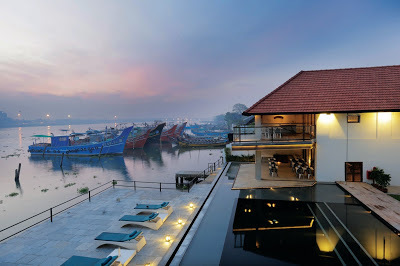
[image error] Architect Tony Joseph was recently selected to be in the top 50 of the most influential architects in the Indian sub-continent. He talks about his career
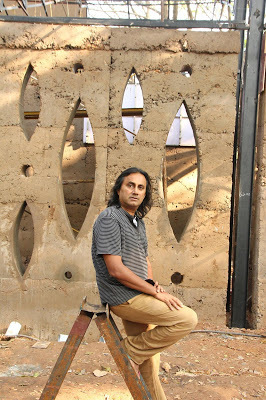 By Shevlin Sebastian
By Shevlin Sebastian Photos: Xandari Harbour; the Vythiri Resort and Tony Joseph (The New Indian Express, Kochi, Thiruvananthapuram and Kozhikode)
Published on April 11, 2017 23:07
April 10, 2017
Serving The Faithful
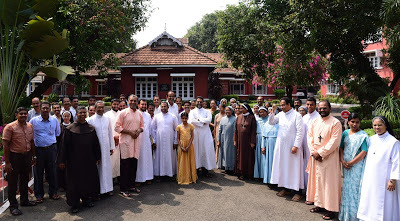
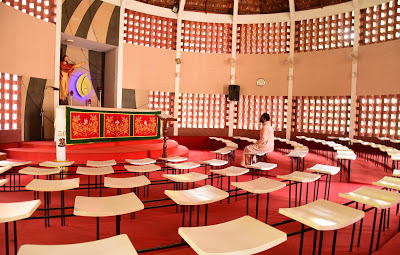 The Pastoral Orientation Centre, at Kochi, has celebrated its golden jubilee recently. A look at its activities
The Pastoral Orientation Centre, at Kochi, has celebrated its golden jubilee recently. A look at its activitiesPhotos: Staff and visitors at the Pastoral Orientation Centre, Kochi; the inside of the chapel. Photos by Albin Mathew By Shevlin Sebastian On a recent morning, at his office at the Pastoral Orientation Centre (POC) at Palarivattom, Kochi, director Fr. Varghese Vallikkatt received a visitor. His name was George James (name changed). In his early thirties, George was out on bail, after spending five years on a murder charge. “George told me that he had been falsely accused,” says Fr. Varghese. “Now the woman who said she was a witness to the murder has recanted her statement during the ongoing trial. There is a good chance that he will be set free.” George said that he had become more spiritual in prison. After speaking for a little while George left. “Many people who come to the POC feel a sense of peace,” says Fr. Varghese. The POC has been in the news because it celebrated its golden jubilee recently. The centre houses the representatives of the three main churches of the Catholic community, namely the Syro-Malankara, the Syro-Malabar and Latin rites. In Kerala, the Catholics comprise about 55 lakh people. “The POC has an important mission of bringing all the churches together,” says Mar Cardinal George Alencherry. Incidentally, it is also the secretariat of the Kerala Catholic Bishops' Council.
“We discuss matters connected with our faith and the relationship with the larger society,” says Fr. Varghese. “What should be our contribution? And what should be our mission at this particular time?” Sometimes, there are soul-searching discussions. “There have been recurring criticism about our work in education and health care, and of our institutions becoming commercialised and competing with others,” says Fr. Varghese. “We had a lot of discussions about our role. And we came to to the conclusion that all educational and health-care institutions should be part of our mission, where we should serve the poorest of the poor.” Following the arrest of Fr Robin Vaddakumchiryil, the vicar of the St Sebastian church at Kottiyoor, on sexual abuse charges, there were deliberations on how to ensure a safe environment for minors and vulnerable adults. The POC is a good place to have talks thanks to its campus spread over four-and-a-half acres. There is a main administrative block, a chapel, a residential building for visiting Bishops and priests, a canteen, and a block for the womenfolk. Interestingly, at the back, the priests are growing tomatoes, small gourds, cabbage, cauliflower and bananas. A gaggle of geese, turkeys and ducks can be seen, apart from hens, an emu and a Doberman. At one side, the POC and the Vediyoor Madom Temple share a wall, while on another, it is with the Madavana Panchamoorthi Temple.Asked whether the increasing siege on minorities is a source of worry, Fr. Varghese says, “It is a challenging and difficult time, especially in North India. We are a peace-loving people, who have contributed much more to society than the size of our population. But we value as much the union and the solidarity with other communities.”
(The New Indian Express, Kochi)
Published on April 10, 2017 21:43
April 9, 2017
The World Is Beckoning
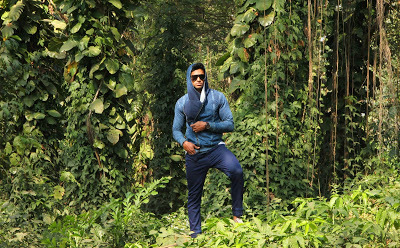
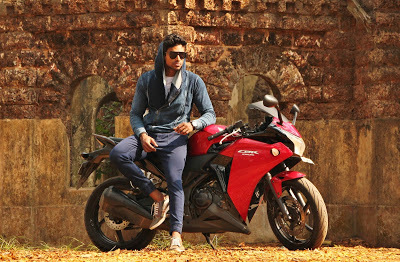 Vishnu Raj S Menon, the first Malayali to win the Mr India title, is gearing up to make a mark in the Mr. World contest
Vishnu Raj S Menon, the first Malayali to win the Mr India title, is gearing up to make a mark in the Mr. World contestPics: Albin Mathew
By Shevlin Sebastian
Moments before the winner of the Mr India 2016 contest was announced by Bollywood superstar Hrithik Roshan, at Mumbai, on November 23, Vishnu Raj S Menon, who was standing in the last row, of the 16 participants, closed his eyes and prayed fervently to his favourite god: Lord Vishnu. And then the magic happened. “Vishnu Raj” said Hrithik. And a stunned Vishnu made his way to the front.
“The first thought that came to my mind was that now I had to represent India at the Mr. World competition,” says Vishnu, who became the first Malayali to win the coveted title. And when Vishnu shook Hrithik's hand, the latter said, “I can see, in your eyes, the hard work that you have put in. You deserve the win.”
It was a fairy tale for Vishnu. Because just three years ago, Vishnu met with a bike accident in Thrissur. His thigh bone was dislocated and Vishnu was not able to walk for three months. “In the end, I was bed-ridden for six months,” he says. At that time,Vishnu was doing his first-year civil engineering course from the M.V. J. College of Engineering at Bengaluru. Anyway, once Vishnu recovered, he returned to his college.
Vishnu's turning point came when he took part in the 'Models Unlimited' contest in Bengaluru in October, last year, and came under the guidance of Prasad Bidapa, the well-known fashion stylist and choreographer. “Prasad Sir taught me the basics of how to walk on the ramp, look good and radiate confidence,” says Vishnu. “He also spoke about the importance of mental strength.”
For the Mr. India contest, Vishnu lifted weights, and did endurance running. He was also on a strict diet, where he ate mostly egg whites and drank green tea. As a result, the 6' tall Vishnu weighed 82 kgs, and displayed rippling chest and thigh muscles, apart from a six-pack.
In the 'Mr. Active' round, Vishnu did 50 push-ups, sit-ups, and burpees each, ran 20 laps of a 400 m track, carried a 40 kgs sandbag on his shoulders and pushed a large tyre for 100 metres. In the end Vishnu came in the top six. But in the photogenic round, Vishnu emerged in the first place.
But all that is in the past. Now Vishnu is training hard for the biennial Mr. World title, which will take place at London, in July, 2018. For that he has already received words of advice from Rohit Khandelwal, the reigning Mr. World. “At present, I am doing a lot of cardiovascular training, apart from lifting weights,” says Vishnu. He is also taking personality development courses, dance as well as acting classes.
Contestants from more than 40 countries will take part. “With self-confidence, hard work and a strong will, I think I can win Mr. World,” says Vishnu, who will be the first Malayali to take part in this international pageant.
(Sunday Magazine, The New Indian Express, South India and Delhi)

Published on April 09, 2017 22:57
April 3, 2017
The Rasas Of Cooking
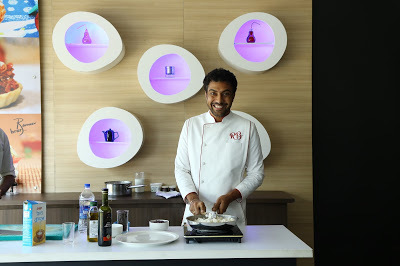
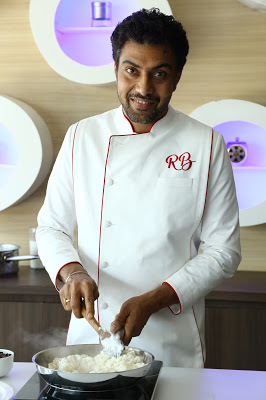 Chef Ranveer Brar talks about the charms of Kerala cuisine and the recipe for success
Chef Ranveer Brar talks about the charms of Kerala cuisine and the recipe for successBy Shevlin Sebastian
At a convention centre in Willingdon Island, Kochi, Chef Ranveer Brar puts chocolate cream, butter, sugar, and caramelised orange juice into risotto rice mixed with milk. Then he stirs the mixture, heats it up, adds leaves of mint, and then offers it to the people present. The resulting taste is simple and delicious.
“Risotto is an Italian dish, but they don’t make it sweet,” says Ranveer. “It is more a savoury, like mushroom risotto. But I decided to make something new.”
Ranveer had been specially invited by Mercedes Benz for their customer engagement initiative called Luxe Drive.
But this is not the first time that Ranveer has come to Kerala. Eleven years ago, he had come for a friend’s wedding and became enamoured of Kerala cuisine. “I loved the avial I ate at the function,” he says.
Thereafter, he started studying Mappila food, Syrian Christian recipes and the menu of the Nampoothiri Brahmins. “The fascinating part about Kerala cuisine is the way it changes across regions,” he says.
And he lists his favourites. “The biriyani that the Mappilas make is awesome,” says Ranveer. “It is not refined and sophisticated. Instead, it is rustic but tasty. Similarly, the practice of sadhya was started by the Nampoothiris as a way to feed the Brahmins. I also enjoy the Syrian Christian fish curry but this is something I would like to have the next day, because it tastes good only after a day of fermentation.”
Asked to compare Kerala cuisine with other parts of India, Ranveer says, “It cannot be compared, because for 2000 years there have been so many influences: the Romans, Arabs, Dutch, Portuguese, and British. It is a unique cuisine.”
And thanks to his Global Menu television show, on the Foodz channel, Ranveer is always coming across unique cuisines. “The show goes off the beaten track and has focused on places like North and South Korea, Sri Lanka, Romania and Mongolia,” he says.
The Mongolians have a dish called Khorkhog. Chicken or lamb is cooked with vegetables and stones in a closed container. “When you eat it, you can detect a slight earthiness from the stones, which makes it very tasty,” says Ranveer.
Apart from his TV show, Ranveer runs restaurants in the USA, Canada and India. Last year, he brought out a cookbook called ‘Come into my kitchen’. His Mumbai-based premium patisserie, ‘English Vinglish’ serves fusion desserts, breads and bakes. Ranveer has done a mini-video series on Twitter titled ‘Ranveer On The Road’, which featured his culinary sojourn through Australia, apart from being a judge on Season 4 of Masterchef India.
And this passion for food began in the unlikeliest of places. When he was a child, growing up in Lucknow, his grandfather Jagir Singh would take him to the gurudwara. A restless Ranveer would run around and end up at the langar. “That was when I saw cooking for the first time,” he says. Soon, Ranveer began helping around.
At age 16, he did the unthinkable for a son of an aeronautical engineer. He ran away from home and worked at a roadside kebab shop run by a man called Munir Ahmed for eight months. However, later, he graduated from the Indian Institute of Hotel Management at Lucknow.
Asked the secret to a good dish, Ranveer says, “Our five fingers have five rasas: sweet, sour, salty, savoury and spicy. So, when we cook with the hand, the rasas go into the food. And when we eat with our hand, the rasas go inside us. It is important to cook honestly and sincerely because food transfers emotions. So, you are always giving a part of yourself in every dish.”
(The New Indian Express, Kochi and Thiruvananthapuram)
Published on April 03, 2017 22:04
April 2, 2017
Making Children Smile
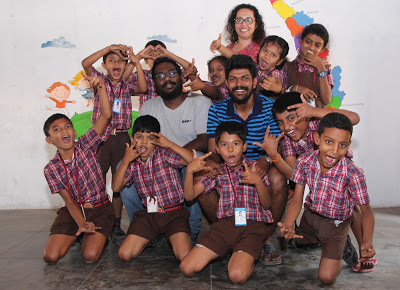
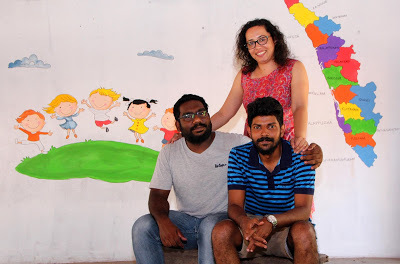 The Heyyo Media group, through their 'My Classroom Campaign', is brightening up classrooms, all over India, with colourful art on the walls
The Heyyo Media group, through their 'My Classroom Campaign', is brightening up classrooms, all over India, with colourful art on the wallsPhotos: Students of the St. Ignatius Lower Primary school at Kochi, along with the Heyyo Media group members; (From left): Jayakrishnan G. Pillai, Founder-Director of Heyyo Media, Creative Head PA Sreejith and Sumi Thomas, Content Head. Pics by Albin Mathew
By Shevlin Sebastian
During the lunch-break, on most days, seven-year-olds Prijith P and Abhirami Rajesh would rush to stand against the wall of their classroom at the St. Ignatius Lower Primary school at Kochi. There is an illustration of a smiling giraffe holding a baby monkey. Beside it is a scale to measure the height. Prijith looks at Abhirami and says, “I am taller.” Abhirami shakes her head and says, “No, I am.”
Their class teacher Sheeja Raju smiles indulgently. “They do this nearly every afternoon,” she says. “All the children now enjoy coming to school.”
The transformation happened a couple of months ago. Members of the Heyyo Media, an interactive agency, transformed the drab walls, with more than 60 illustrations. These include drawings of houses, a monkey reclining on the branch of a tree, a smiling dragon, various types of fishes and octopuses, as well as maps of Kerala and India.
On a recent morning, nine-year-old Nasir Ali leads a visitor to his favourite illustration: it is the Aesop’s Fable, of a thirsty crow trying to fill a pitcher, which has very little water, with pebbles, to raise the water level.
“Thanks to these illustrations, teaching has become easier,” says Headmistress MG Sindhu. The classes, in one large hall, comprise students from Class 1 to 4. “They are the children of labourers,” says Sindhu. “There is also a colony nearby where a lot of Maharastrians live. Their parents and grandparents have studied here. So, they continue to send their children to our school.”
Asked why they took the initiative, Jayakrishnan G. Pillai, Founder-Director, says, “At Heyyo, we believe in giving back to society. But we wanted to do something creative. My team and, particularly, [Creative Head] PA Sreejith, who is an artist, can draw well. We began discussing the possibilities regarding art and schools, and changing lives. Then a colleague Joffy V Cyriac said, 'Why don't we paint a classroom?' And that was how we began the 'My Classroom Campaign'.”
Meanwhile, the Campaign has begun to spread its wings. On December 15, last year, they were at the 'City of Los Angeles' school in Matunga, Mumbai. But when they first walked in, and tried to take off some posters, they got a shock: the cement came off. “We could see the brick layer underneath,” says Sreejith. “We realised that we had to do a lot more.”
So, three layers of primer were applied. “Fortunately Shalimar Paints came forward and provided all the material that was required,” says Content Head Sumi Thomas.
In February, the members travelled to Noida, where they painted a classroom for the NGO, My Perch. “In March, we worked on nine classrooms in two schools, Government Lower Primary School, Puthuvype, Kochi, and Kumar Shala in Vapi, Gujarat,” says Pillai. “In 2017, our aim is to do 50 classrooms across the country.”
(Sunday Magazine, The New Indian Express, South India and Delhi)
Published on April 02, 2017 21:52
March 30, 2017
The World Of Consciousness

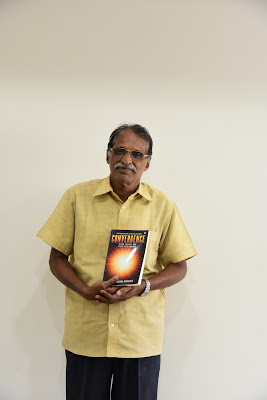 In his book, Radhakrishnan Panicker delves on spirituality and science
In his book, Radhakrishnan Panicker delves on spirituality and scienceIllustration by Amit Bandre
By Shevlin Sebastian
Three-year-old Swarnalatha Mishra was travelling in a vehicle with her father in Madhya Pradesh. About 180 kms from her home, in a town called Katni, she asked the driver to go down another road towards her 'home'.
Her father was puzzled. She then described the house: it was white in colour and had black doors. There were four rooms on the ground floor. There was a railway line in front and a girl's school at the back. The family also owned a motor car.
And they stopped at a house in the exact description given by Swarnalatha. When Prof. HN Banerjee, the head of parapsychology at the University of Rajasthan, came to know about this, he interviewed Swarnalatha and confirmed all what she said.
Swarnalatha said that she was Biya Pathak in her previous life. This was confirmed by the family members who said that Biya had died in 1939, leaving behind a husband, Chintamini Pandey, and two sons.
Later, when Chintamini met Swarnalatha, in 1948, she accurately told him many details of their married life including an amount of Rs 1200 that she put in a small box, which was taken away by Chintamini.
This anecdote has been recounted in the book, 'Convergence – Ultra Science and Vedic Spirituality' written by Radhakrishnan Panicker, a Kochi-based retired teacher who has worked in India, Africa, USA and UK.
“I had studied 20 cases of soul reincarnation,” says Radhakrishnan. “Reincarnation is a fact of human existence. Suppose, I am a murderer. When I reincarnate I might come back as a victim. This is how karmic effects are neutralised.”
Radhakrishnan has covered a wide range on the subject of science and spirituality in his 282 page book, published by Notion Press. These include the superstring theory, primordial vibrations, electronic voice phenomena, consciousness, yoga sutra, and the quantum theory.
Asked about the existence of God, he says, “There is a God field. It is a power beyond the ordinary. It encompasses the whole existence. To realise God you have to reach that field. But your brain has got adapted to the visible world. So, it is not easy. That is why spiritual masters recommend meditation, yoga and mantras in order to access the internal energy field.” ”
There are all types of energies. “There is the energy in the visible world – atoms, photons, graviton, electrons, the earth, galaxies, solar system and the universe,” says Radhakrishnan. “There is also an existence beyond the visible world. As for what it is, the answer comes from the Vedas. It is satchidanandan or the universal consciousness.”
One of the subjects Radhakrishnan explores is Extra Sensory Perception (ESP). “Ingo Swann, an American medium, was told to visualise Russian military installations, through ESP, because the spy satellites could not get any photographs,” says Radhakrishnan. “Ingo concentrated and drew what he saw. Later, it turned out to be accurate. The American government released a report in 1995 stating that a man can leave his body provided that there is enough energy to do so. Through my research I realized that this energy is divine.”
Ingo wrote a book, called 'Kiss The Earth Goodbye', in which he asserted that a man can leave the earth through an out-of-body experience. “Like reincarnation, ESP is also an undeniable fact of human existence,” says Radhakrishnan.
Asked about his final conclusions, Radhakrishnan says, “We are immortal, in the sense that we willcontinue to exist long after we die. There is an immortal energy field within all of us.”
(The New Indian Express, Kochi and Thiruvananthapuram)
Published on March 30, 2017 22:34
A Feast Of Art
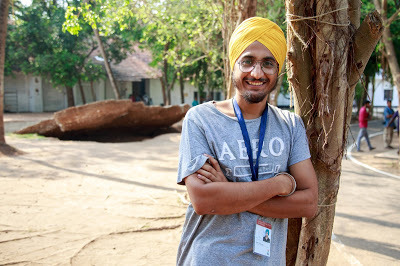
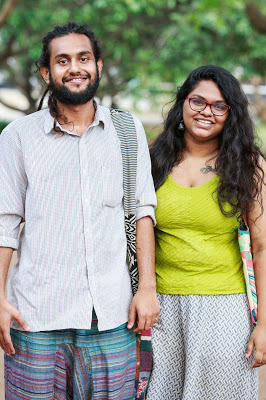
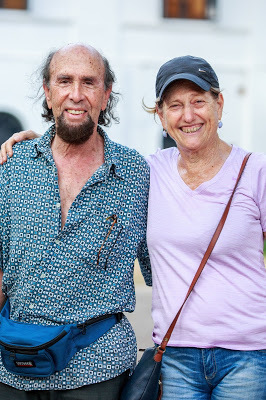
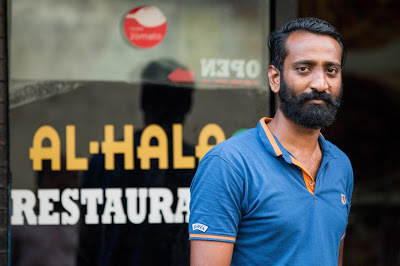 As the Kochi Muziris Biennale came to an end, on March 29, visitors, stakeholders, and participants give their impressions
As the Kochi Muziris Biennale came to an end, on March 29, visitors, stakeholders, and participants give their impressionsPhotos: Pavneet Pal Singh; Rahul Nair and Meenakshi Soman, Isi and Zehavit Orlev and Jineesh, NA, the owner of the Al-Hala restaurant
By Shevlin Sebastian
Without realising it, there have been gains for Pavneet. “My public-speaking skills has improved a lot, and I have learnt to deal with all types of people,” he says. But, mostly, the visitors have reacted gratefully. “That is because contemporary art can be difficult to understand so they need help,” says Pavneet. Not surprisingly, Pavneet is keen to take part in the next edition but, as he says, “Preferably,
in some other role.” Finally, when asked about the art work which created the most
impact on people, Pavneet says, “Raul Zurita's 'Sea of Pain'.” At that installation, you
walk across a foot-high sheet of water, inside a room at Aspinwall House. This is a poetic
metaphor about illegal migrants trying to cross over to Europe from Africa on rickety boats
through the Mediterranean Sea and losing their lives in the process.
Young and Creative Walking swiftly through the grounds of Aspinwall House are Rahul Nair and Meenakshi Soman, independent writers and documentary film-makers. For the Surat-based Rahul, this is his second visit. “I had come earlier in December,” he says. “But when I heard that the Biennale is ending on March 29, I decided to come again because I had not seen all the works. And it has been great so far.”
So excited was Rahul that, after his first visit, he informed his friends, While a few took flights,
several took the 32-hour train journey from Surat to come to the Biennale over the past three
months.
For the Kochi-based Meenakshi, she has come often. “The best time is in the morning, just
when it opens,” she says. “There are hardly any visitors and I enjoy walking around. Since the
works are so amazing, it has been a creative stimulant for me.”
Like, in the case of Rahul, Meenakshi's many friends from places like Pune and Mumbai
made he journey to see the Biennale. “They all liked it,” she says. “But they all agreed that
one day is not enough. You need to spend at least two to three days to see all the works.”
From Israel with love
(The New Indian Express, Kochi)
Published on March 30, 2017 22:28
March 28, 2017
“The Biennale Is A Large Cultural Movement”
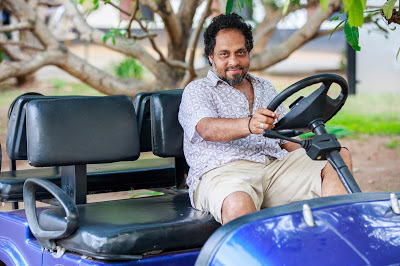 Riyas Komu, the Co-Founder of the Kochi Muziris Bienalle reflects about the third edition
Riyas Komu, the Co-Founder of the Kochi Muziris Bienalle reflects about the third editionBy Shevlin Sebastian
It is a warm Wednesday evening at Aspinwall House, Fort Kochi. And Riyas is in a relaxed mood. Wearing a purple shirt and Bermuda shorts, he had just concluded an interaction with noted Bollywood film director Vidhu Vinod Chopra.
As the couple move away, Riyas ruminates on the impact of this year's edition. “Many people had come with the mind-set of the Bienalle being a spectacle, and of looking at a work and understanding the story,” he says. “But this Biennale [curated by artist Sudarshan Shetty] has been different. It is asking many questions and has made people puzzled. Nevertheless, there are many art works which are pulling people in.”
For Riyas, the most stunning has been the 'work in progress' by mural artist PK Sadanandan. “He has engaged with a contemporary art project with a great mind of a traditionalist,” says Riyas. “Sadanandan broke all the rules of the Kerala mural art tradition in the way the work is laid out. Normally, the images are very flat, but his is three-dimensional.”
For most artists, it is difficult to do their creative work in front of the public. But Sadanandan has allowed visitors to see how the colours are formed and filled in, and how the brushes are made. Despite thousands of people walking past, he is able to concentrate on his work.
“That is because he is a master,” says Riyas. “It reminds you of the time [in the 15th century] when great artistes like Michealangelo and Leonardo Da Vinci made art in front of the public. And he is narrating a story, with so much contemporary relevance ('Parayi Petta Panthiru Kulam', a Kerala legend, of the 12 kulams – families born to the Parayi, or women of the 'pariah' caste). Sadanandan's work will remain as one of my great memories of this Biennale.”
Another aspect, which is new to this edition, has been that many artistes, curators, museum directors and academicians from all across the world had come to see the Biennale. “It is an event that can no longer be missed,” says Riyas. “Artistes like Ali Steger and Raul Zurita have not shown in Bienalles before. We have introduced many different dimensions to art-making. So far, in the past six years, we have produced more than 250 projects.”
As for the future, Riyas says, “The Biennale is now a large cultural movement led by the people. We [Bose Krishnamachari and himself] were just the catalysts to make it happen. I am sure the future is bright.”
(The New Indian Express, Kochi)
Published on March 28, 2017 20:47
March 27, 2017
An Upside-Down World
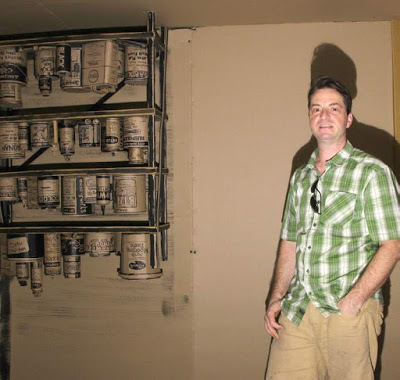 Affected by Hurricane Sandy, which hit New York in 2012, American artist Tom Burckhardt recreates a flooded studio, in a unique way, at the Kochi Muziris Biennale
Affected by Hurricane Sandy, which hit New York in 2012, American artist Tom Burckhardt recreates a flooded studio, in a unique way, at the Kochi Muziris Biennale Photo by Albin Mathew By Shevlin Sebastian When you step in to see the American artist Tom Burckhardt’s cardboard installation, at the Kochi Muziris Biennale, you experience a sense of disorientation. The reason: everything is upside down. So, paint cans on shelves are pointed towards the floor, there are black monochrome paintings which are also upside-down, some books, like Leo Tolstoy's 'War and Peace' and Fyodor Dostoyevsky's 'Notes from the Underground', defy gravity, while a couple of canvases are stuck on the ceiling.Titled, ‘Studio Flood’, the work was, indeed, inspired by a flood. On October 29, 2012, Hurricane Sandy hit New York with destructive force. “There was five feet of water inside many houses and artists’ studios,” says Tom. “Some artists, who had basement studios, lost their entire work.”This was also the situation at the art gallery district called Chelsea, which is close to the shore. “The image of all the art works floating in the water stayed in my mind, apart from all the wasted effort,” says Tom. “The only good that came out of it was that artists, normally so self-centred, came together and helped one another.”Asked whether his installation is an exact replica of a studio in New York, he says, “There is a bit of Kochi, too.” That is true. When you look through the window, you can see palm trees. On one wall, there is Kerala-style political graffiti, with the familiar hammer and sickle, the symbol of the Communist Party.Like in the US, flooding is a big issue in coastal Kochi as well as Kerala, owing to global warming. “So I believe there is a link between New York and Kochi,” he says.Tom also believes his work is an apt metaphor. “When a tragedy hits people they will always say, 'My world has turned upside-down',” he says.Initially, when Tom arrived in Kochi, he did find his world go upside-down. That’s because he could not find the right type of cardboard to make the installation for several days. When Biennale founder Bose Krishnamachari came to know, he made a call. Within a day, the correct material arrived. “It gives you an indication of Bose's clout,” he says.Asked why he used cardboard, Tom says, “People can relate to it, unlike oil and acrylic.” The other materials he used were black paint and glue. As for his impressions about the Kochi Biennale, Tom says, “This is a very organic festival. It is based on an artistic vision and not so much a curator or a theorist's vision, and I tend to be uncomfortable with the latter.”There are other charms, too. “The setting is unique,” he says. “I love it that this festival is for everybody in this town. In other Biennales, art seems to belong to the rich and the cognoscenti.” (Sunday Magazine, The New Indian Express, South India and Delhi)
Published on March 27, 2017 21:08



